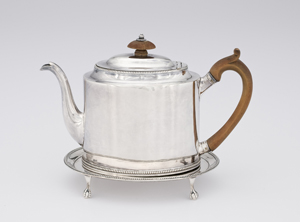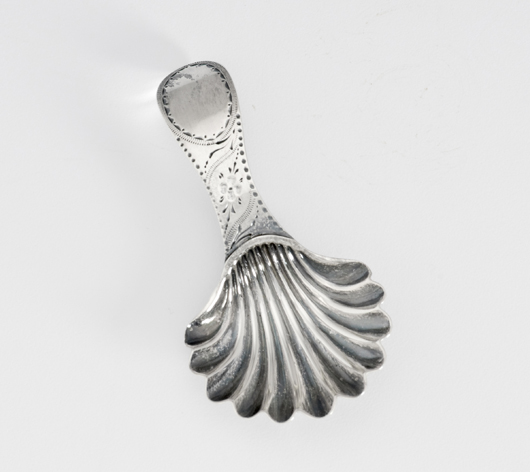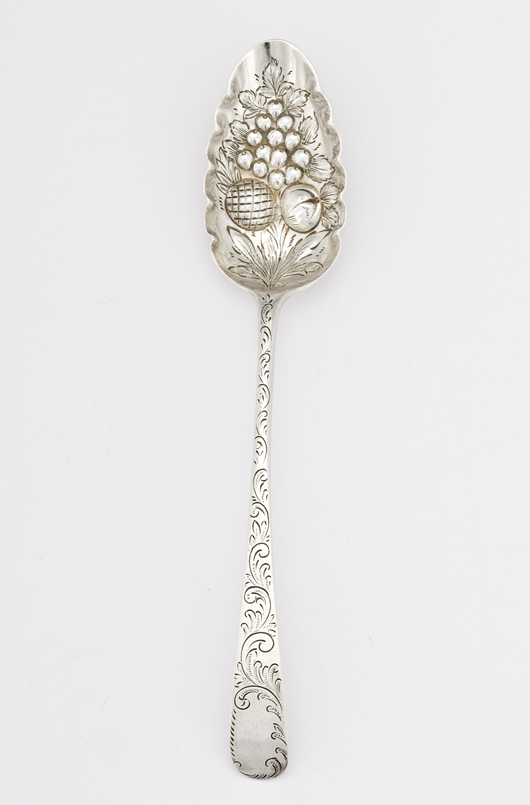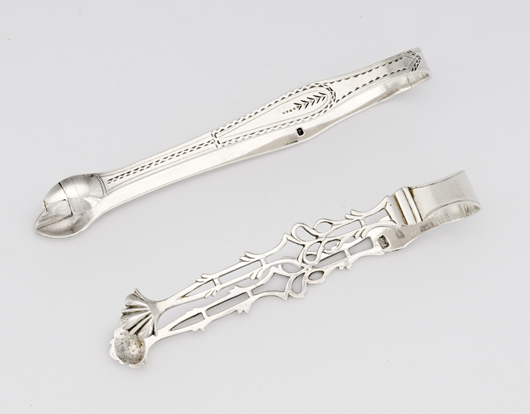
Among collectors of English silver, works by women silversmiths are quite prestigious for their scarcity. One name in particular, Hester Bateman, stands out. She is best known and probably the most highly regarded silversmithess of 18th-century England, though her works are very affordable for a beginning collector.
In 18th-century England, silversmithing was perhaps the only trade considered “gentlemanly,” for one could create delicate objects of masterful skill and high style for an elite clientele. Believed to be a trade practiced by only by men, the art of working silver is labor intensive and requires strength and endurance and working with intense heat.
Little is ever discussed about the women silversmiths of 18th-century England, although there were several, including Hester Bateman. Most came to the trade serendipitously. Wives who had helped with their husband’s businesses, or daughters who has come into the trade by apprenticing for fathers, may have found themselves without the head of household and with the need to earn a living wage, so they came into the trade through the “back door.”
Married to John Bateman when she was about 15 years of age, Hester had little formal education. John was by trade a chain maker and silver worker, essentially a craftsman who performed small jobs for master silversmiths who were too busy to handle all of their commissions. Hester maintained a household and raised children while assisting her husband in every aspect of his business, including sales and hands-on metalworking. When he died of consumption in 1760, Hester filed the will the day after his death. John left her his business and his tools. From that day forth, Hester, with the assistance of her children, built a dynastic firm that lasted several generations and became an upper middle class provider of luxury items to their English clientele.
In 10 years’ time, Hester Bateman transformed “John Bateman, Jeweler, Chainmaker and occasional silverworker” to her own concern, “Hester Bateman, Silversmith.”
Striving to build a customer base, Hester kept a keen eye on stylistic shift. She predominately worked in the Adam style, the only style named after an architect rather than an English regent. Adam style was the essence of neo-classicism, and Hester’s work honors that spirit. Her hollowware is sparsely elegant with surface decoration, pierce work or ajouré, and engraving. An emerging middle class, intent on acquiring the accoutrements of upper classes, created a large demand for tea wares, or service pieces for the serving of tea, the telling ceremony of status. Hester and her family made perhaps thousands of teaspoons, tea caddy spoons and tablespoons, some more desirable today than others, in particular her bright-cut decorated spoons.
Her hollowware pieces are better examples for her best work, both as true interpretations of the neo-classical style and as magnificently executed metalwork. The irony here is that while highly desirable, Hester Bateman silver is oddly still affordable. The beginning collector can buy Bateman spoons ranging from $75 to $300 depending on the level of decoration and specialty of use. Hollowware Bateman pieces range from $500 for a simple waste bowl to several thousands for kettles-on-stands.
Sources for this article:
Hester Bateman, Queen of English Silversmiths, by David S. Shure,
Doubleday, New York, 1959.
Women Silversmiths, 1685-1845: Works from the Collection of the National Museum of Women in the Arts by Philippa Glanville and Jennifer Faulds Goldsborough , Thames and Hudson, 1990
George III and Other Old English Silver Including Examples by Hester Bateman – Part 3 of the Estate of Cushing Toppan [Parke-Bernet, Feb. 4-5, 1959]
Wes Cowan is founder and owner of Cowan’s Auctions, Inc. in Cincinnati, Ohio. An internationally recognized expert in historic Americana, Wes stars in the PBS television series History Detectives and is a featured appraiser on Antiques Roadshow. Wes holds a B.A. and M.A. in anthropology from the University of Kentucky, and a Ph.D. in anthropology from the University of Michigan. He is a frequently requested speaker at antiques events around the country. He can be reached via email at info@cowans.com.
ADDITIONAL IMAGES OF NOTE




